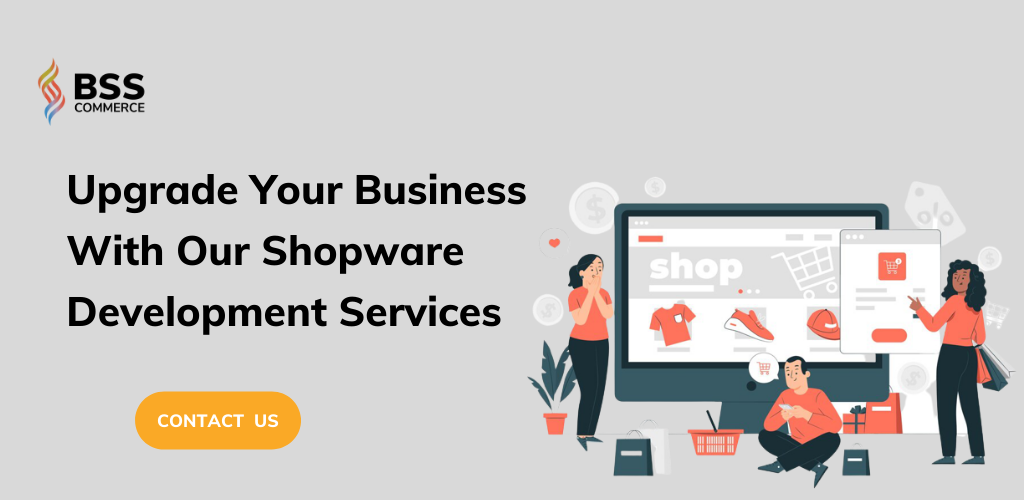Currently, Shopware 6 tutorial is extremely necessary for store owners to have a deep understanding of it as eCommerce solutions have gradually gained popularity in the eCommerce sector. With eCommerce solutions based on frameworks like Shopware 6, those would promise to give you higher individualization, various options for modifications, and flexibility as those link to different IT systems. However, it seems to be not easy to find the best eCommerce software as it is required to have a careful evaluation of the needs, features as well as tools.
Shopware 6 will be a new solution that has been upgraded to give the shop owners a more flexible and simple experience.
In this article, we will give more detail about all things about Shopware 6 that you should keep in mind. Let’s get started with our Shopware 6 tutorial.
What is Shopware 6?
Table of Contents
Shopware 6 is known as an open-source technology using an MIT license. It permits the users to modify and redistribute the platform with no limitations. Nowadays, it is crucial to build a broad and active community around technology. Besides, it plays an indispensable role to speed up the development of the platform because members in this community can continuously create new plugins and develop existing ones.
As a modern eCommerce platform, Shopware 6 can connect enterprise-level capabilities with flexibility. This platform can be customized and expanded by some additional features or custom layouts. In addition, it is suitable for small-sized and medium-sized online enterprises that allow them to implement a shop in the short run thanks to out-of-the-box features and ready-to-use plugins.

Shopware 6 is considered as the next sure step after the appearance of Shopware 5. Currently, this latest version has been incorporated with a modern technology stack based on Symphony. Thus, Shopware 6 has captured the attention of many top Magento community members after the acquisition of Adobe and the corresponding changes since it opened for merchants and developers. Therefore, realizing the need to have a new open-source ecosystem, Shopware 6 has brought special things to offer.
Shopware 6 architectures and features
In comparison with Shopware 5, the sixth version of Shopware added tons of new features, such as offering a flexible Rule Builder, making orders by voice. However, this new, rich tool-set requires a more complicated architecture. In this Shopware 6 tutorial, we will explain more about Shopware 6 architecture and features.
Shopware 6 key architectures
Shopware 6 has been established from the ground up. Currently, Shopware has decided to make a new platform in the API-first model. Therefore, each action performed in the platform can be accessed via API and available in each sales channel. It enables the retailers to offer their products independent of time, place, and devices. In addition, it can integrate with other systems such as CRM, ERP, or PIM for instance. Below, you will get a deeper insight into Shopware 6 architectures.

Three top-level building blocks of the Shopware 6 platform
- Shopware core
Shopware core is the center of the platform and includes all eCommerce-specific resources and workflows. It is built as a modular, not strict monolith. Besides, the modules are classified and distributed into different directories.
- Shopware admin
As a single-page application, Shopware administration provides a rich user interface on top of the REST-API which is based on communication with the core. It is an Interaction-Oriented-System following the instance of the Web-Components models.
- Shopware storefront
The Shopware storefront is a Web-UI that gives the customer view and operates the sales channel interfaces of the core. In addition, the Shopware storefront components always provide the customer view established on the top of the Core. The storefront is a sales channel and operates in a similar process to the Core.
Repository structure
One of the awesome facts of Shopware 6 is that it is a “vendor dependency” that leads to a multi-repo structure. Below, we will give you an overview of the structure of some repositories and which one to clone when you want to establish a shop. Shopware 6 comprises many multiple repositories, including 2 important repositories.
- Shopware platform
This repository is known as a mono repository that contains all modules. This is where the development of Shopware core takes place. As a result, in your projects, you will need it as a dependency. It is easier to make changes through all modules to remain stable. Here you can contribute to the development through pull requests. Besides, it can split into multiple repositories for setups of production.
- Shopware development
The repository can be known as the development template and where your Shopware journey begins.
Project template
The project template can connect your webserver with a defined platform as an entry point. For example, you can easily customize the template as your project needs thanks to customization options.
Headless eCommerce
One new standard for eCommerce to build and come with various benefits for business is separating the frontend and backend of the architecture of Shopware 6. Besides, it is also known as the heart of the platform. Establishing as a modular and scalable API, it consists of 3 services including Admin API, Sync API, and Sales Channel API.
Shopware 6 features
Shopware 6 also pays attention to the shopping experience of the customer like Magento 2. You could unify it across channels, preparing a tailored offer. In addition, the platform has simplified the workflow of store admins and gives a friendly routine.

Rule Builder
Rule Builder seems to be a variation of catalog rules and cart price of Magento 2. It has enabled the creation of many rules related to price promotions. Besides, it also gives rich cross-selling chances and can be used to show or hide content following certain conditions.
The targeting customer of the tool is defined by complex and nested rules. Besides, the rule creation process is quite straightforward and admin-friendly. Therefore, non-technical people can easily use it.
Shopping experiences
The successor of CMS systems of Shopware 5 got a revamped tool. Its name is Shopping Experiences. The new version of CMS includes commerce and content that supports establishing a unified shopping experience via multiple channels. Like Rule Builder, Shopping experiences do not require any prior technical knowledge for management and are established by an intuitive interface.
The usability of the tool sticks with prefabricated blocks which offer various combinations of images, texts, components, and other types of contents. The tool has simplified customizations features thanks to the support of the blocks. Whereas each block is responsive by default, you can quickly adapt it to a defined sales channel, preparing layout updates for products, categories, and landing pages in Shopping Experiences. Besides, it is also important to note that the tool can completely be integrated with the Page Web Application.
DISCOVER more about PWA pros and cons: https://bsscommerce.com/blog/pwa-pros-and-cons/
Sale Channels
Almost all eCommerce platforms will be restricted when it comes to sale channels. On the contrary, Shopware 6 has established a feature that supports selling anywhere your customers are. Therefore, you can reform your eCommerce storefront into a hub in which all retail activities occur.

Therefore, Shopware 6 enables you to combine marketplaces, social media platforms, POS systems, and typical eCommerce stores. This platform is where you can manage all of them. At the same time, sale channels can have some differences in assortment and localization features such as language, tax…
Product Management
It will be easier for you to create and control multiple product variants in Shopware 6. It gives suitable properties for any type of business. Therefore, you can manage them easily from an appropriate screen. In addition, the system also permits you to utilize these properties to the product level.
Dynamic Catalogs
Product Streams feature can let you create dynamic product catalogs thanks to flexible criteria about the filter. Besides, the systems can automatically update the streams whenever adding new products, or any change is suitable with the applied criteria.
Discounts and Promotions
One another reliable component that this Shopware 6 tutorial desire to mention is the discounts and promotions. Those clever marketing features are to upgrade sales by targeting groups and setting discounts. Thus, it is easy to control and assign to a defined target audience segment.
Media management
Shopware 6 gradually becomes a central library for organizing, storing, and retrieving any type of digital media. Therefore, you can use a structured extension to simplify your workflow and deal with any data amounts without compromising performance. Besides, it can classify media into appropriate categories, add unique keywords, permit advanced filtering and displays.

B2B Suite
Like Magento 2, you can also have a B2B suite with Shopware 6. You can integrate the B2B framework seamlessly into existing processes and workflows. Therefore, you do not need to make an effort to adapt to a wide range of business requirements. Besides, Shopware 6’s B2B suite provides precise controls, admin and company rights and obligations, budgeting, partner-specific price functions, quick orders, and upgraded partner contact management.
Various payment opportunities
Paypal has integrated with Shopware 6 through a corresponding module. You can operate with more than 200 markets worldwide and use more than 100 currencies for payment. In addition, Paypal also supports making payments via both credit and debit cards. In addition, direct debits and payments upon invoice can be accepted.
Extensibility
You can extend the functionality of Shopware 6 by third-party modules. This platform provides a Plugin Manager that can quickly simplify the appropriate chores. Besides, it enables you to install, purchase, delete, and update third-party extensions. In addition, the Shopware Ecosystem offers various eCommerce software solutions.
Internationalization
This platform concentrates on international businesses. With many different features, it can help merchants discover new potential markets such as exploring multiple languages and currencies. In addition, Shopware 6 has prepared for the differences in legal systems in different countries. You can promote rule-based pricing and checkout configured for many different markets.
Helpful Shopware 6 plugins
Like Shopware 6’s predecessor, it has a store for plugins. Although Shopware 6 does not have as many available plugins as Shopware 5, the number of more than 1000 plugins in development is extremely impressive and will continue growing as the community develops at a dramatic pace.
Shopware 6 & PayPal Integration
Paypal is one of the most necessary integrations for any eCommerce platform. This payment platform has provided many critical payment methods and given access to more than 100 currencies and 200 markets. Besides, this plugin has offered integration with the most common products like Paypal Express-Button, Pay Upon Invoice, Paypal Plus, or PayPal Installments.

There are 3 main benefits of Shopware 6 & PayPal Integration:
- The entire “Paypal package” with just one click
- The top online payment method for your business
- Easy integration without the support from technical expert knowledge.
Shopware 6 & Stripe Integration
From a card payment perspective, Stripe is a necessary extension. This global platform allows making payments by debit and credit cards from over 135 countries. In addition, it also accepts many local payment methods, including Klarna, Ideal, Bancontact, Sepa DD, Sofort, and Giropay.
Shopware & Stripe Integration has brought many benefits. However, we would like to mention 3 main benefits of it in this Shopware 6 tutorial:
- Manual payments and refund processes become easier
- Integrated fraud protection
- Real-time accounting details and up-to-date payment
Shopware 6 & Google Shopping Integration
Google Shopping is the next must-have plugin. It is one of the well-known product search engines. Besides, it permits you to place products on this platform and establish profitable sales channels.

3 Key benefits of the Shopware 6 & Google Shopping extension:
- Optimize the product feed for Google Shopping
- Increase the visibility of your products
- Predefined available template
Shopware 6 & DHL Shipping Integration
The final extension that we desire to mention in this Shopware 6 tutorial is DHL Shipping. In addition, this official plugin permits the shipping labels creation with just a few clicks directly in Shopware Administration. It integrates the online store with the DHL business customer portal and transfers tracking codes to Shopware Administration.
Main benefits of the Shopware 6 & DHL Shipping plugin:
- Shipping labels creation in Shopware Administration
- Easy to cancel faulty shipping labels at any time
- Assigned tracking codes that are available from your store
BSS Commerce – a reliable Shopware development center
According to this Shopware 6 tutorial, Shopware 6 is a customizable platform with a long list of creative features. It is suitable for both enterprises and small-sized or medium-sized businesses. However, choosing a suitable Shopware development agency will be one of the most important steps when you find a partner to cooperate with. If you need to find a trustworthy Shopware 6 development, BSS will be one of the most suitable selections among reliable Shopware 6 development centers.
In addition, We are confident to bring to you exceptional user experiences that promote your business to a new level. Our solutions can bring to our customers a future-oriented and highly adaptable eCommerce solution. We always ensure the highest level of security, transparency without hidden cost in all of our given services.
Let’s take a look at our Shopware development services!
- Strategy (Strategic Consulting, UX/UI Design)
- Development (Website Development, Mobile App Development, Plugin Development, and Platform Migration)
- ECommerce Acceleration (Integration, Speed Optimization, and Feature Enhancement)
- Support and Maintenance (Web Maintenance, Code Audit, and Web Testing On Demand)
CLICK here to know more about our Shopware development services: https://bsscommerce.com/shopware-development.html
With over nine-year experience in eCommerce, BSS Commerce can make sure that we can build your store to promote sales and stand out in such a competitive market. One of our top priorities of us is to give the customer the most satisfactory experiences. In addition, if you choose us, you will not be worried about data security as it is protected by a non-disclosure agreement. Now, it is time to change your key business process!
If you’ve got any technical questions related to Shopware 6 tutorial, CONTACT NOW to let us know your problems. We’re here to help you!

